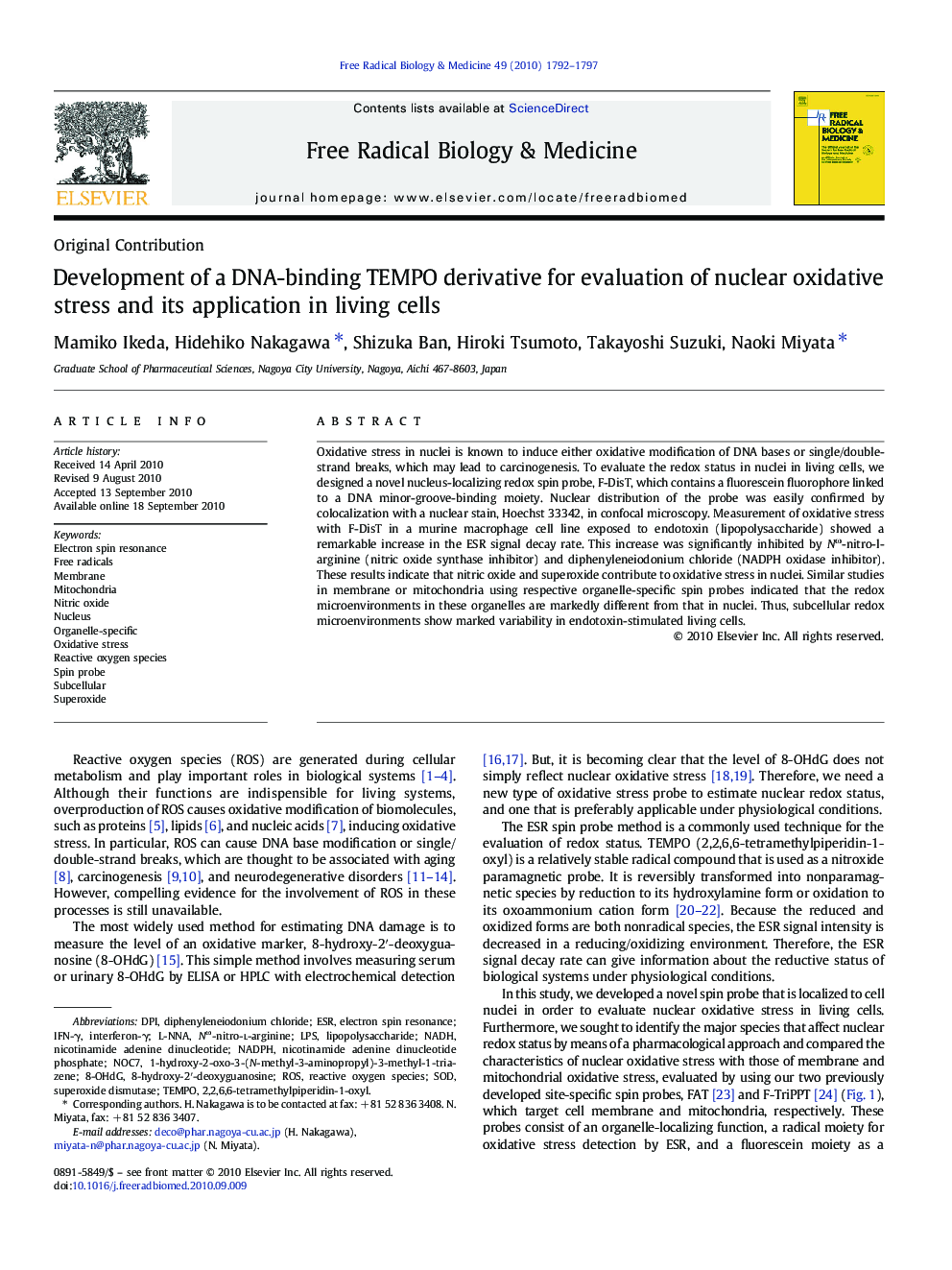| Article ID | Journal | Published Year | Pages | File Type |
|---|---|---|---|---|
| 1909475 | Free Radical Biology and Medicine | 2010 | 6 Pages |
Oxidative stress in nuclei is known to induce either oxidative modification of DNA bases or single/double-strand breaks, which may lead to carcinogenesis. To evaluate the redox status in nuclei in living cells, we designed a novel nucleus-localizing redox spin probe, F-DisT, which contains a fluorescein fluorophore linked to a DNA minor-groove-binding moiety. Nuclear distribution of the probe was easily confirmed by colocalization with a nuclear stain, Hoechst 33342, in confocal microscopy. Measurement of oxidative stress with F-DisT in a murine macrophage cell line exposed to endotoxin (lipopolysaccharide) showed a remarkable increase in the ESR signal decay rate. This increase was significantly inhibited by Nω-nitro-l-arginine (nitric oxide synthase inhibitor) and diphenyleneiodonium chloride (NADPH oxidase inhibitor). These results indicate that nitric oxide and superoxide contribute to oxidative stress in nuclei. Similar studies in membrane or mitochondria using respective organelle-specific spin probes indicated that the redox microenvironments in these organelles are markedly different from that in nuclei. Thus, subcellular redox microenvironments show marked variability in endotoxin-stimulated living cells.
